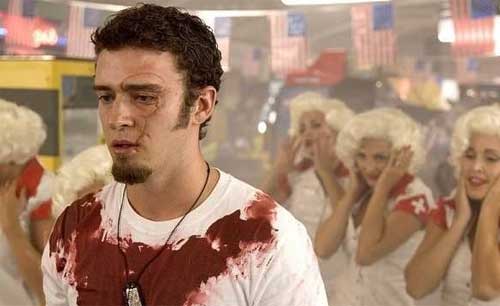Title: Deep
Red
Director: Dario ArgentoReleased: 1975
Starring: Macha Meril, David Hemmings, Daria Nicolodi, Gabriele Lavia, Giuiana Calandra, Glauco Mauri, Clara Calamai, Piero Mazzinghi
Plot: A famous psychic (Meril) reads the mind of a murderer during
a public demonstration of her abilities and soon finds herself being targeted
by the murderer. Now her neighbour Marcus sets out to find her killer while
teaming up with a brash reporter Gianna (Nicolodi).
Review: Sometimes
all it takes is for one film to make you question your established opinion on a
genre / director, something which certainly was the case here being neither a
fan of Argento’s films I had seen much like the few giallo films I had also seen.
Needless to I was pretty sure of my opinions only for this film to then go and screw
it all up, let alone leaving me wondering if I’d been too quick in forming an
opinion of Argento’s ability as a director.
So why watch
this one? Well other than its legacy as one of Argento’s best films even if it
is largely over shadowed by the likes of “Susperia” and “Tenebrae”, the thing
which made me want to check this one out was this bizarre and slightly creepy
puppet which currently resides in Argento’s horror memorabilia store “Profondo
Rosso”.
True its one
of the more random reasons for wanting to watch something, but sometimes it
leads to some of the best discovers as was more than the case here as this film
really is a blast from start to finish.
Opening on a
Christmas scene sound tracked by a creepy children lullaby, as we see two
figures in shadows fighting until one of them is suddenly stabbed. From here
the film cuts to the psychic demonstration which will form the catalyst for the
film, with Argento cleverly shooting footage from the killers POV as he refuses
to give us any clues about who the killer might be, outside of a shot of the
killers eyes framed in a steamed up mirror and their black leather gloves but
what would a giallo film be without these key piece of wardrobe while Argento
performed all the shots of the killers hands himself.
The creepy
music we hear at the start of the film also soon becomes a calling card for the
killer, which makes the fact that we follow Marcus throughout the mystery all
the more plausible seeing how he’s a composer. More so when he is an unlikely
hero with his mild mannered nature, which in turn makes for several comedic
moments when he starts investigating with Gianna who is pretty much his
opposite in every way, while also driving possibly the most taped together car
since Enzo’s car in “The Big Blue”. The jury is still out though on which is
worst. Gianna’s actual assistance on the case is limited to say the least,
especially as the two set off on their own investigations after their initial
meeting before finally coming together once more for the finale. This would be
more irritating if they weren’t so entertaining, though it may explain why their
scenes were trimmed as part of the 22 minutes of footage which the original US
release cut out.
Throughout
the film Argento crafts some memorable deaths including one victim being
drowned in boiling hot water. Argento and co-writer Bernardino Zapponi
intentionally thinking of painful injuries that the audience could relate to
and it proves to be an effective decision as all of the murders are memorable
while saving his most spectacular deaths for the end ensuring that the film
concludes in a memorable fashion. At the same time they are only emphasised by
the great score provided by progressive rock band “Goblin” in the first of the collaborations
with Argento, even though they were only picked when Argento couldn’t secure
Pink Floyd who had been his first choice after disagreements with jazz pianist Giorgio
Gaslini caused him to walk out on the production, with Argento feeling that the
music that Gaslini had produced for the soundtrack sounded too chaotic, even
though Argento would ultimately still use three of his compositions in the film.
An effective
film and perhaps the one I wish I’d used for my introduction to giallo, let alone
the films of Argentino rather than the introduction I got from “The StendhalSyndrome” and Bava’s “Bay of Blood” which served to put me off the genre rather
than sparking an interest in seeing more, which was the feeling that I was left
with at the end of this film, even if it might not spill as much blood as other
films in the genre. Still if you want a starting point this is as great one to
start with.























